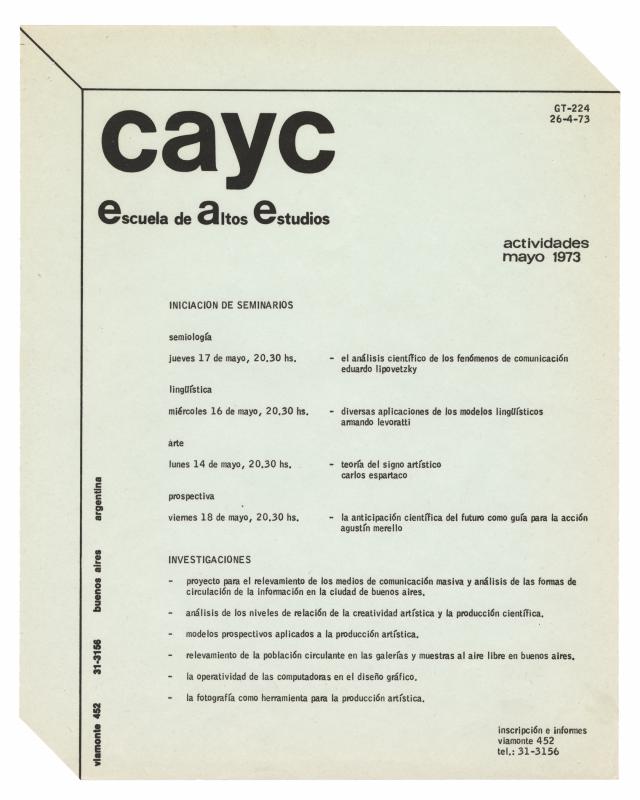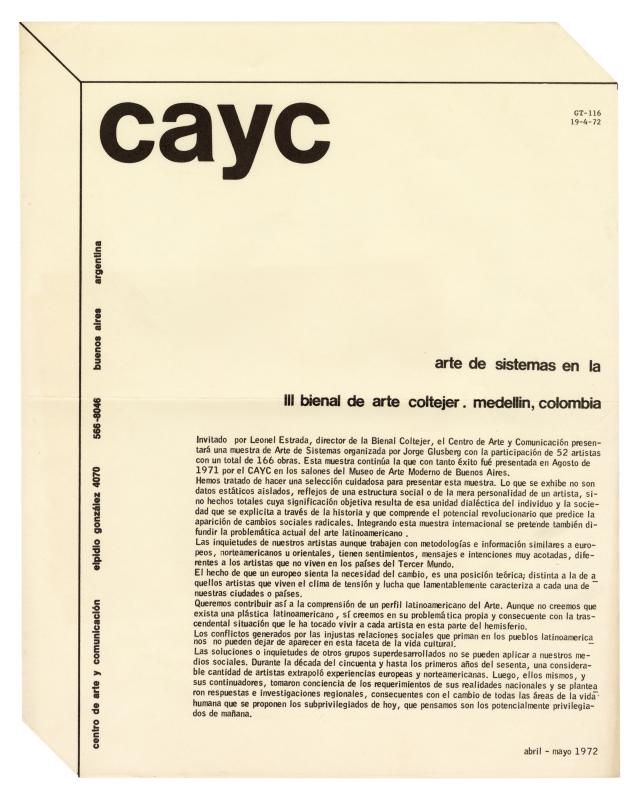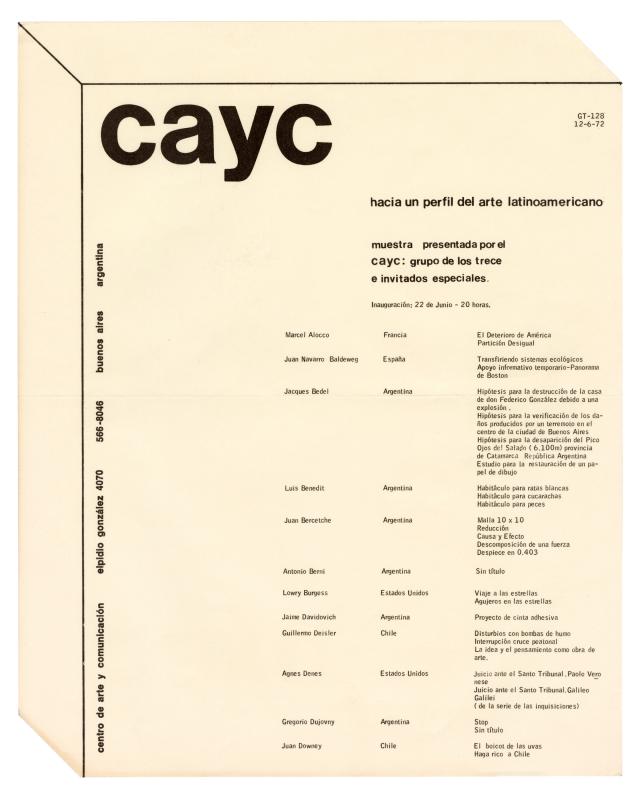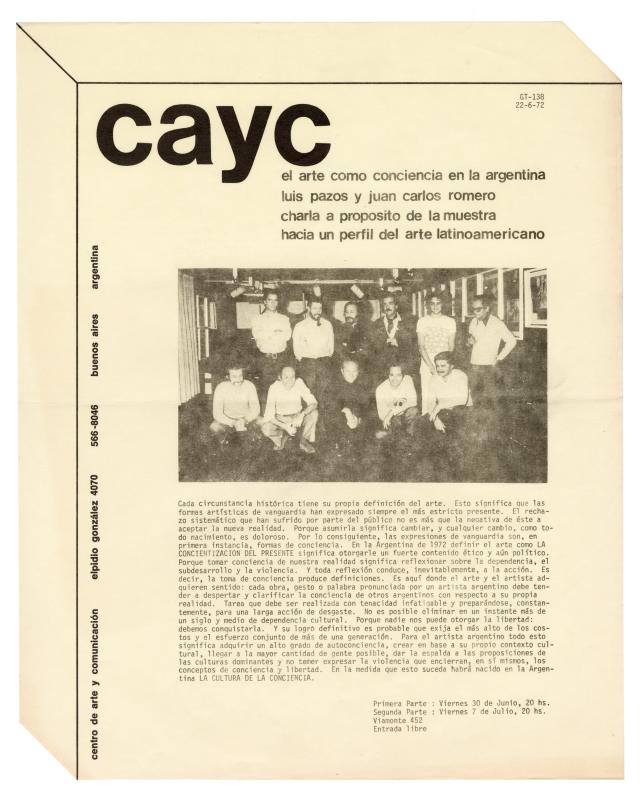Ever since it was founded, the CAYC (Centro de Arte y Comunicación), helmed by the cultural promoter, artist, and businessman Jorge Glusberg, was intended as an interdisciplinary space where an experimental art movement could flourish. In addition to the exhibitions, a program of different activities exposed attendees to the latest in art and scientific thinking. According to Glusberg, the coordination between theoretical thinking and artistic practice was an essential part of social change.
During the military dictatorship of General Juan Carlos Onganía, the CAYC became a cultural home for the Fundación de Investigación Interdisciplinaria, a space that welcomed a group of dissident professors from the Facultad de Arquitectura y Ciencias Exactas de la Universidad de Buenos Aires after the military takeover of the university in what came to be known as “La Noche de los Bastones Largos” in June 1966. In its early years the center organized a variety of activities with intellectuals that contributed to the circulation of ideas from different disciplines (analytical philosophy, mathematical logic, epistemological problems, psychology, semiotics, and linguistics), which had been excluded from official circles.
The center’s interest led to the creation of the Escuela de Altos Estudios (EAE) in early 1973. The objectives described in the relevant newsletters (GT-201; doc. no. 1478752, GT-201- A; doc. no. 1478753, GT-224; doc. no. 1478771, GT-219; doc. no. 1478755) were apparent in the activities organized by the EAE (some of which were more technical than interdisciplinary), as well as in the art produced by artists associated with the center. This initiative was an expression of the mood of openness of the “Cultural Spring” that flowered during the brief democratic presidency of Héctor J. Cámpora, which lasted forty-nine days in 1973. It was seen as putting an end to a seven-year period of military dictatorships (first under Onganía, then Levingston, and then Lanusse), after Perón had been in exile for eighteen years.
The “Jornadas latinoamericanas de discusión” that were announced in this newsletter were intended as an opportunity to reflect upon the socioeconomic and, above all, cultural and artistic fate of Latin American countries. This initiative should be understood in terms of the rapid dissemination throughout Latin America of the Theory of Dependence, which explained that the poverty the region’s countries were experiencing was a result of the political and financial oppression of the great world powers. Hence the contradictory concepts of “dominance” and “liberation” applied here to other social areas, such as culture, education, and even communication.
Each of the “Jornadas” was assigned to a guest philosopher from Latin America: Augusto Salazar Bondy (1925–1974) from Peru, Leopoldo Zea (1912–2004) from Mexico, and Félix Schwartzrnann (1913–2014) from Chile.
This position was in line with the new discursive approach adopted by the center midway through the previous year, at a time when the Grupo de los Trece were making their first public appearances. (GT-116; doc. no. 1476404, GT-125; doc. no. 1476409, GT-128; doc. no. 1476410">1476410, GT-128- II-III; doc. no. 1476410">1476410, GT-138; doc. no. 1476335).






